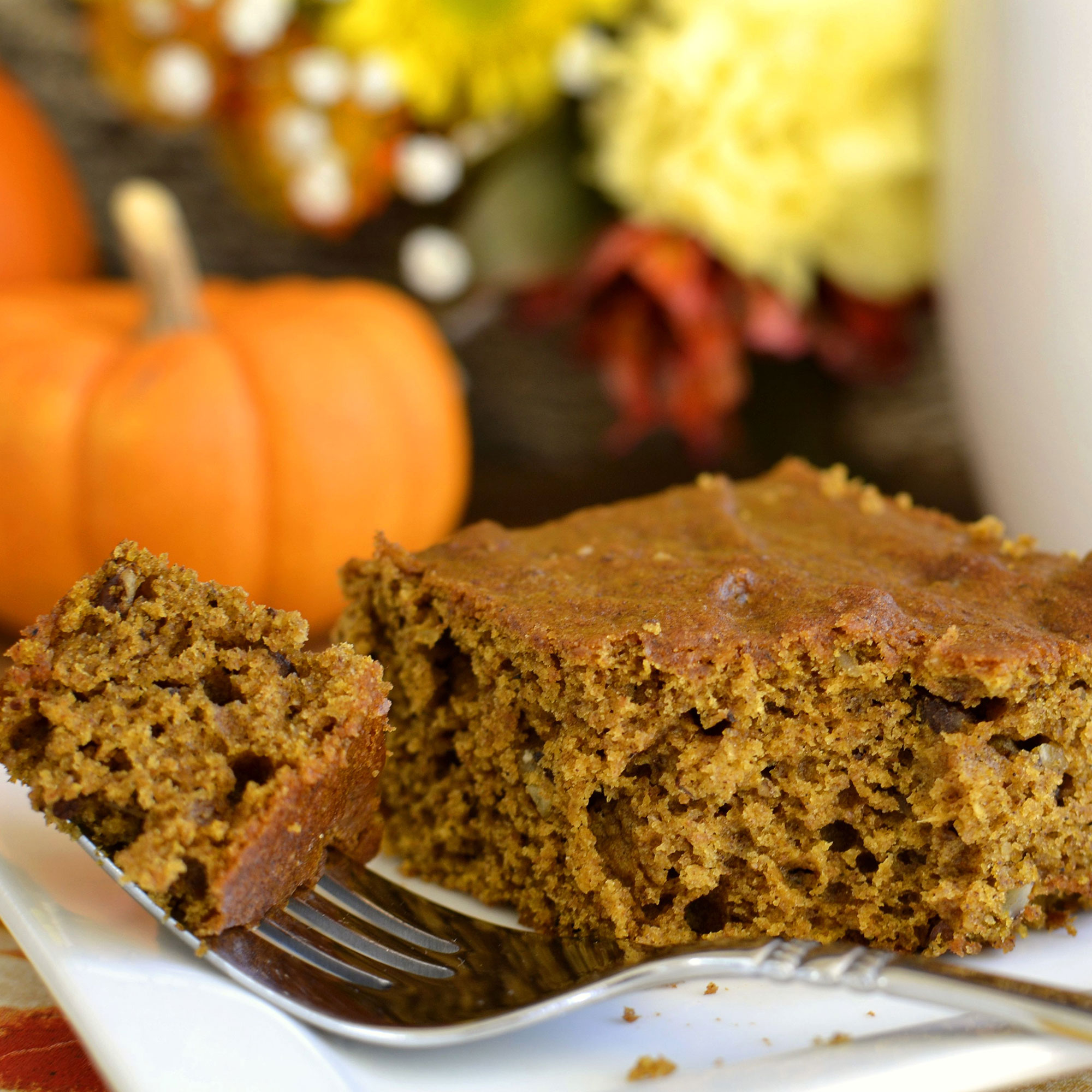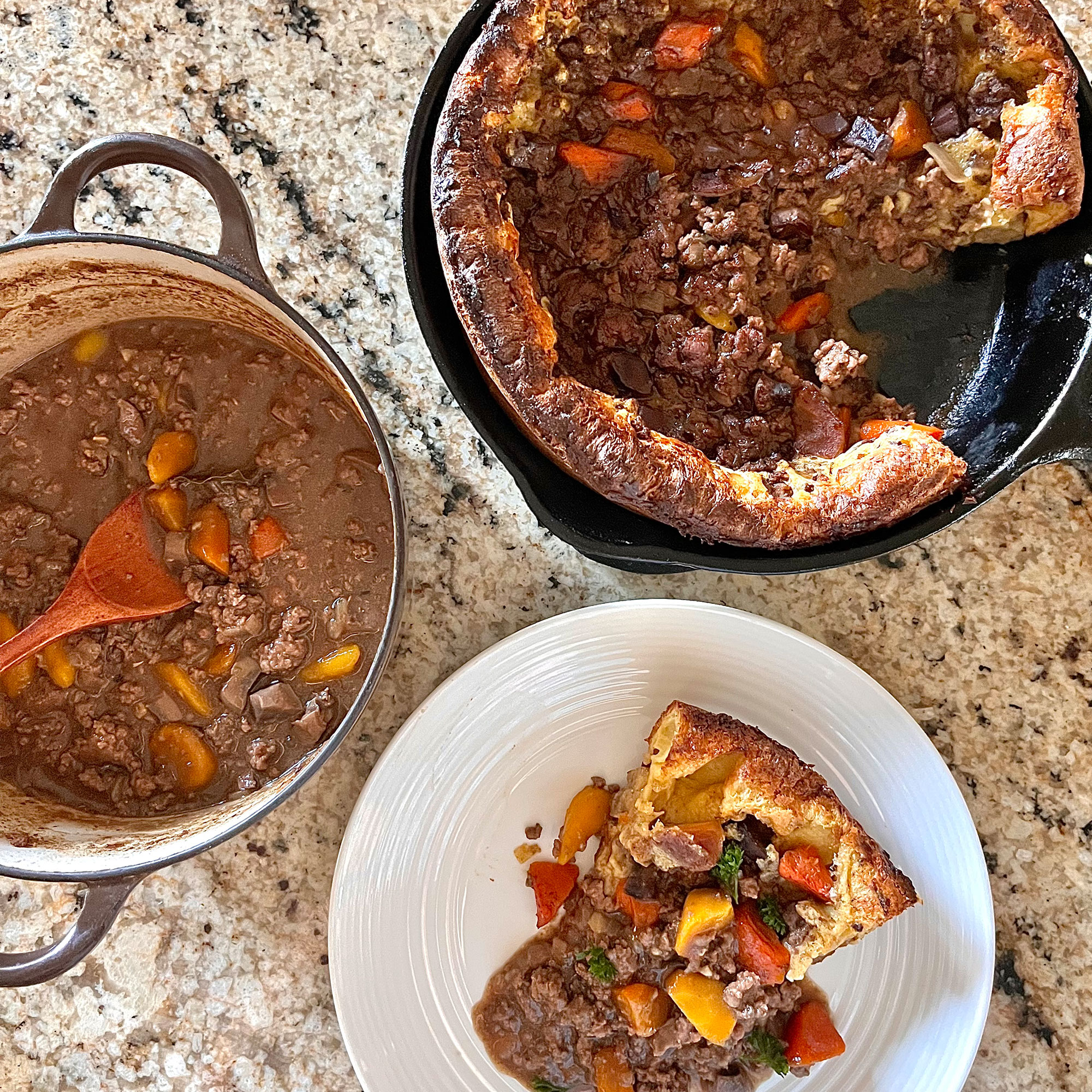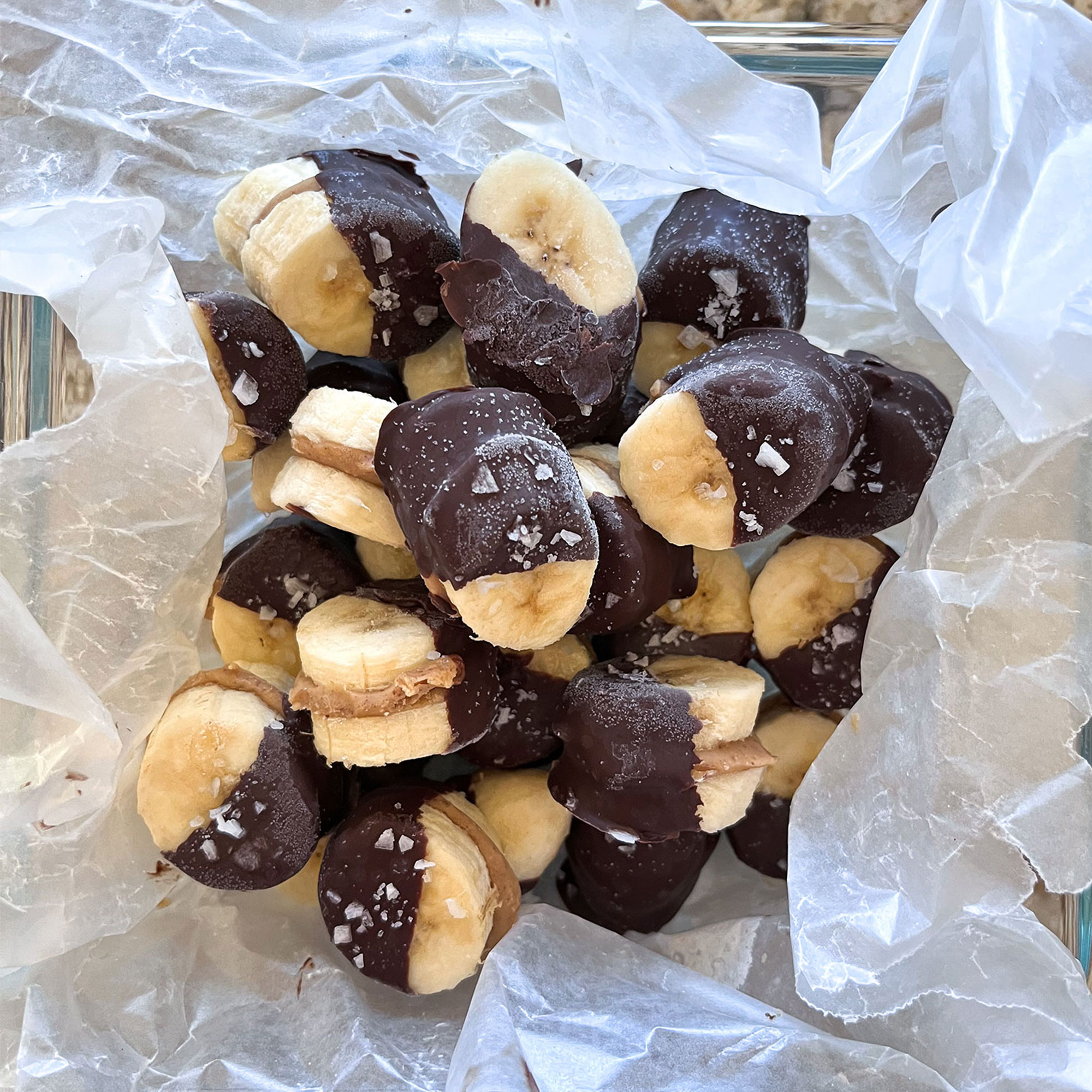

Prep:
60 mins
Cook:
30 mins
Total:
90 mins
- 1 tbsp Oil
- 1 Japanese Purple Sweet Potato (Cut into 1 inch blocks)
- 1 Medium Onions (Cut into 1 inch slices)
- 3 Carrots (Cut into 1 inch blocks)
- 300g Grass-fed Beef (Thinly sliced)
- 1 bag Shirataki Noodle (Cut into 1/3 length)
- Snow Pease (Optional)
Flavoring
- 400g Water
- 6 tbsp Soy Sauce
- 5 tbsp Sake
- 3 tbsp Mirin
- 1.5 tbsp Dashi Powder (Optional)
- Bring a pot of water to boil.
- Add cut Shirataki noodles
- Let the water be back to boil, then cook the noodles for 1 minute.
- Set aside.
Nikujaga
- Cut all the ingredients.
- Heat a pot over medium high heat. Once the pot is warmed up, add 1 tbsp of oil.
- Add all the cut vegetables.
- Let them cook till the edges of the vegetables start to become transparent.
- Add 400g water and let it boil lightly.
- Once the water starts boiling, add sliced beef. Make sure to spread them out to prevent them from sticking to each other.
- Let the pot come to boil and remove the scum lightly.
- Add Shirataki Noodles.
- Add 6 tbsp Soy Sauce, 5 tbsp Sake, and 3 tbsp Mirin. (1.5 tbsp Dashi Powder is optional.)
- Mix the pot lightly to let the sauce go around evenly.
- Put Otoshibuta and cook over med-low heat for 20 mins. (If you do not have an Otoshibuta, please scroll down to read how to make one with parchment paper!)
- At 10 minute point, remove the Otoshibuta, mix up the whole pot, put the Otoshibuta back on, and continue cooking.
- After 20 mins, remove the Otoshibuta and continue cooking for 10 mins.
- Add Snow Peas and cook for 2-3 mins.
- Turn off the heat, put back the Otoshibuta, and let it cool.
per serving
Calories: 147 kcal
Total Fat: 2.9 g
Cholesterol: 0 mg
Sodium: 806.2 mg
Total Carbohydrate: 16.9 g
Dietary Fiber: 2.8 g
Sugar: 6.5 g
Added Sugars: 0 g
Protein: 9.8 g
Iron: 3.4 %
Calcium: 2.7 %
Potassium: 192.2 mg
Vitamin D: — %
Vitamin A: 106.3 %
Vitamin C: 5.2 %
- Store in an air-tight container for up to 3 days in the fridge.
Did you make this recipe?
\ Hi, I'm Kie! /

A wife, recipe creator, and noms lover behind Ancestral diets.
It’s my passion to share and spread love through cooking & baking.
To learn more about us, please click here.
Kie Ino
Nikujaga, what?
Nikujaga is one of the most well-known “mom’s cook” in Japan. It uses Japanese core flavoring of Soy sauce, Sake, and Sugar.
The golden ratio is
Soy sauce : Sake : Sugar = 1:1:1
From there, you can adjust the flavoring depending on your preference. Less sweet or saltier, or whatever you like. For the most of my recipes, Mirin is used instead of Sugar. Mirin has more mild sweetness than sugar, which is what Ethan and I like. Plus… there is no need to use processed sugar.
Each family has its own flavor and there is a right way or wrong way of making it as long as you put your love into it
It does have certain amounts of carbs, but this dish always gives us great energy and comfort!

Ingredients
Thin Sliced Beef
Since it’s more of an Asian thing to use thinly sliced beef, I’ve been slicing beef myself.
What I do is thaw a block of beef for a couple of hours in the fridge and slice it into 1-2mm thick slices with a knife against grains. By keeping the beef soft but hard enough, it’s easier to make nice and thin slices.
Potatoes
Any kind of potatoes or sweet potatoes should work fine, but I’ve had the most success with Japanese sweet potatoes. Other yellow, more regular types of sweet potatoes are a lot softer and cook faster, meaning too delicate for this recipe. But please do experiment and see what you like the most!
Onions
I recommend using yellow or white. Not purple. Make sure not to cut it so thinly. Otherwise, they’ll cook down and dissolve!
Carrots
Any kind of carrots works great. Cut them smaller than potatoes.
Shirataki
They’re made from glucomannan, a type of fiber that comes from the root of the konnyac plant.
They grow in Japan, China and Southeast Asia. It contains very few digestible carbs, but most of its carbs come from glucomannan fiber.
Shirataki noodles contain a lot of water. In fact, they are about 97% water and 3% glucomannan fiber. This is why when using Shirataki noodles, we boil them first to let water come out and get rid of bitterness, so it won’t bother the flavoring of the dish.
This is one of the biggest parts of this dish and it is ideal if you can use it. But, I know it is very hard to find in most grocery stores unless you have an Asian grocery store nearby, so if you don’t have access to it, please don’t worry and skip the ingredient.
(Snow peas)
This is completely optional. It’s used more for putting color into the dish. Some don’t use them, and some do. If you like snow peas, go for it! If you don’t, no worries at all!

Soy Sauce
I’m still working on trying to understand the health risks and benefits, but aside from sodium content, gluten, and possible additives, I haven’t been able to recognize any negative effects. The reason why we like to use TAMARI Soy Sauce is that they are made with soybeans 100%. Regular soy sauce is made with wheat (the same amount as soybeans, making it a 50:50 ratio). TAMARI has a smoother and richer taste due to the higher soy protein content, and the aroma doesn’t flash off through cooking.
As a Japanese person, soy sauce is a must item in the house… But please be aware that it does contain high amounts of sodium. If you are sensitive to sodium, please choose low-sodium or avoid using it. You can definitely substitute it with Coconut Aminos.
Sake
The purpose of using Sake here is to:
Add Koku (depth in flavor). Amino acids in Sake will level up the whole flavor.
Adds sweetness. Glucose and Sucrose in Sake create a subtle sweetness that cannot be created by sugar.
Keep the ingredients soft. Alcohol will bind up with water in ingredients and keep them from evaporating, resulting in a softer texture.
and more
Mirin
Mirin is another type of Sake seasoning. Similar to Sake, it helps to add umami to the dish, but since its sugar content is 50%, it is used as a sweetener. Unlike sugar, Mirin creates a softer and more mild sweetness. It also adds shininess to the dish, so it’s often used for Teriyaki.
While table sugar’s GI Index is 65, Mirin contains only 15.

Shirataki Noodles Preparation
1. Remove from the bag and rinse with water.
2. Add to a boiling water in a pot and let it come to boil again.
3. Once the water boils, let the Shirataki noodles cook for about a minute.
4. Drain and set aside.
How to make Otoshibuta*
1. Prepare a piece of parchment paper.
2. Fold in half.
3. Fold in half again.
4. Trim off the corner.
5. Cut the whole paper into a circle.
6. Make a notch around the edges of the circle.
*What’s “Otoshibuta”?
Otoshibuta means dropping lid in Japanese.
Sometimes they’re made with wood, sometimes they’re made with silicone or stainless steel. It’s basically a lid that’s smaller than the pot to put directly onto the food.
Purposese of Otoshibuta are:
To help keep vegetables’ shape while cooking.
To help cook ingredients evenly.
To prevent stock to evaporate too quick too sudden.
You can still cook delicious Japanese dish without it, but the result will differ quite huge.
Directions: Nikujaga
1. Heat a pot over medium heat. Once heated up, put a tbsp of oil and add all the cut vegetables.
2. The edges of the vegetables start to look transparent as they cook. About 5-10 mins.
3. Add 400g of water.
4. Let it come to a boil.
5. Once the water starts to boil, add sliced beef. Try to spread them out to prevent them from sticking to each other.
6. Let the water come to boil again.
7. Get rid of the scum by tilting the pot a little. No need to crazy and try to get rid of them all.
8. Add Boiled Shirataki noodles.
9. Add seasoning.
10. Gently mix the pot to let the seasoning spread out evenly.
11. Put Otoshibuta and cook for 20 mins on med-low heat, keeping the simmer going. At 10 minutes in, stir the pot.
12. Take the Otoshibuta off and let the liquid evaporate for 10 mins.
13. Add Snow Peas and let them cook for 2-3 mins.
14. Serve and enjoy!
When Choosing Ingredients
Grass-fed Beef
I usually use a sliced up Tri-Tip, but you can use any parts of meat as long as they’re thinly sliced. Although, I recommend choosing a type of meat that contains good balance of fats, instead of lean meat for this dish. The fats will add sweetness and good amount of richness to the dish!
Vegetables
It is best to use organic vegetables.
Shirataki Noodles
It’s fairly impossible to pick up an organic Shirataki Noodles, but since it’s nutrient content is 95% water, I do not stress out about it.
TAMARI Soy Sauce
Not the regular Soy sauce. Pick an organic Tamari Soy Sauce that does not contain any additives.
Sake
Mirin
This is important. Please do not get confused with “Aji-Mirin” or “Mirin-style Seasoning.”
Your mirin should only be using rice, distilled rice wine (Shochu), and Rice Koji. There are so many types of Mirin using Glucose syrup or some type of processed sweetener and you want to avoid them.
I like to use Ohsawa Genuine Mirin.
Leftover Magic
I am pretty sure you will be left with leftover stock and some tiny pieces of onions, beef, or potatoes. Put some rice or Udon noodles to it! I cannot recommend it enough because it is very very good.
Directions
- Transfer leftover stock to a small pot.
- Add rice or udon noodles and let them cook for about 10 mins for rice and 3 mins for Udon noodles. (Please follow the instruction on the package when using packaged noodle.)
- When the rice turns. brown and seems to have soaked up the stock, it is done!






























